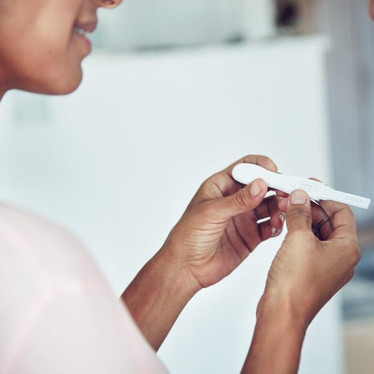
The middle of a woman’s menstrual cycle, ovulation, is usually just associated with either avoiding or trying for a baby. But did you know that ovulation is a health creator? Let’s discuss what else the process of ovulation creates in your body and some of the signs your body gives when there is imbalance.
What is ovulation?
Ovulation is the process of an egg being released from the ovary into one of the fallopian tubes and should occur with each monthly cycle, around 14 days before you bleed. When the egg is released, the remaining structure within the ovary, the corpus luteum, produces progesterone to support early pregnancy until the placenta has developed enough to take over this function. If no pregnancy occurs, the amount of progesterone declines as the corpus luteum breaks down and this triggers menstruation, the shedding of the uterine lining, which marks the first day of the cycle. The whole cycle begins again!
Progesterone
Progesterone is a fascinating hormone. It’s mainly only present in the last 2 weeks of a woman’s cycle and has many functions in the body. Considering it is created by the tiny structure that releases the egg, it’s amazing to consider how broadly it can impact us on a day to day basis.
- Progesterone balances estrogen levels
- When estrogen is high and out of balance, life gets tough! Symptoms of high estrogen can include irritability, mood swings, poor sleep, swollen and painful breasts, fluid retention – and you might notice these particularly in the middle of your cycle when estrogen starts to peak. Through the decades of the 30’s and 40’s there can be a lot of fluctuations to hormone levels from month to month, causing discomfort
- Progesterone helps a good night sleep and positive mood
- With a calming and soothing effect, progesterone can help great sleeps and feelings of relaxation, particularly when it is highest around day 14 – 21 (of a 28-day cycle). If estrogen is high and out of balance, sleep disruption, anxiety and irritability can occur with ovulation, as estrogen peaks and progesterone is still relatively low. Progesterone supports healthy production of GABA, a calming neurotransmitter
- Progesterone helps to build healthy bone
- Along with one of the types of estrogen (estradiol), progesterone helps bone formation in women. From the start of menses in our teens through to when we start losing bone density in our 40’s, having a regular menstrual cycle is like investing in the bank of bone health for the future. When estrogen and progesterone are cycling in balance each month, bone mineral density is stable. Bone health issues can occur when oral contraception is taken for long periods and post-menopause, when hormone levels fall
- Progesterone supports healthy digestion
- Women often notice changes to their bowel motions throughout their cycle. Sometimes with urgency, other times with stagnancy. When estrogen is high (and out of balanced ratio to progesterone), it can be related to an increase in inflammation and frequency of bowel motions. In fact, irritable bowel syndrome occurs more frequently in women and there is correlation with sex hormones. Progesterone works to slow motility, and so when in a better ratio to estrogen, can support good digestive motility.
Signs of ovulation
- A regular period (when not taking the oral contraceptive pill)
- Fertile mucus (similar to egg white)
- A rise in temperature
- Breast tenderness
- A sensation of something popping in the lower abdomen on one side
- Changes to the cervix – the cervix sits high, is soft and open.
Some problems that can occur with ovulation
If ovulation isn’t occurring, there can be many reasons, including:
- A lack of carbohydrates and undereating. With Keto and low-carb diets surging in popularity, it’s important to assess the appropriateness of any eating plan and whether it is the optimal diet for your body at that time.
- Conditions where the cycle is extended and so there are less opportunities for ovulation
- Mittelschmerz – varying levels of discomfort for a short period of time as the egg releases from the follicle. Can be experienced as a ‘popping’ sensation. If there are higher levels of discomfort, then nutrients like quercetin and vitamin C are worth considering, as this can be an excellent support to healthy histamine levels being released from Mast Cells.
What can I do to support healthy ovulation and progesterone?
In the world we live in, with the exposure we have to synthetic estrogen, known as xenoestrogens, usually having enough estrogen is not an issue that most women face, prior to menopause. But having estrogen and progesterone in a healthy ratio can be somewhat of a struggle. This is not helped by many women being on the oral contraceptive for 20-odd years, coming off and finding themselves with fertility struggles.
If you are experiencing general discomfort around the middle or just before you bleed, there are many nutrients and herbs that can be supportive.
Magnesium and Vitamin B6
A winning combination for supporting balanced mood throughout the cycle, as well as relief for tender breasts. B6 helps the normal elimination process of estrogen metabolites from the body. Magnesium can ease a frazzled mind and restore a good night’s sleep.
Iodine
Found in great amounts in kelp, which can be easily added into the diet, iodine is an excellent way to support breast health and healthy estrogen levels. Iodine plays an important role in the ability to become pregnant. Iodine is also an essential nutrient for a healthy thyroid, which helps to regulate the menstrual cycle, and is the organ with the highest concentration of iodine, closely followed by the ovaries.
Zinc
All minerals and vitamins have complex interrelationships, and one of these is zinc and copper, who antagonise each other and compete for a similar receptor site. When there is high estrogen, there is often a high copper picture. Copper can be thought of as a ‘rage’ mineral when it is elevated. When estrogen and therefore copper and zinc are in a better ratio, irritability around the cycle is less likely. Zinc is also involved in healthy neurotransmitter production, helping a normal stable mood. Zinc is also involved in a healthy immune response, so any tenderness or discomfort may be relieved by healthy zinc levels.
Liver function
Naturopathically, it’s essential to consider how the body is eliminating waste when there is any health problem, and so many aspects of health can be supported with helping the liver to do its natural filtration and conjugation of metabolic wastes. Within the diet, many things can be consumed to support optimal liver function, including fibre from nuts, seeds, and vegetables, and certain nutrients. Of interest are the Brassica family of vegetables – broccoli, cauliflower, Brussels Sprouts, kale, cabbage – because of a substance they contain called Di-indolemethane which is known for its talent of healthy estrogen detoxification. Turmeric, milk thistle, and even just adequate water are gentle liver lovers. All these gems support the phases of liver detoxification and healthy ratio of estrogen: progesterone.

